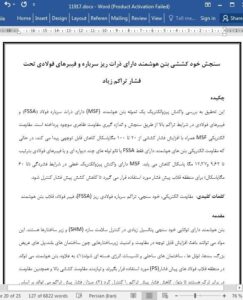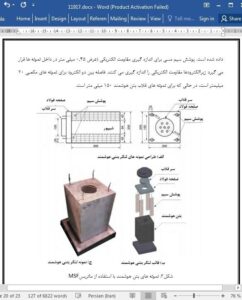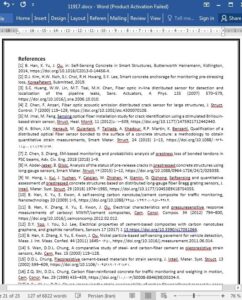Abstract
This study investigated the piezoelectric response of a smart concrete (MSF) containing fine steel slag aggregates (FSSAs) and steel fibers under high compression by measuring the alternative current impedance. The electrical resistivity of MSF notably decreased (15.65%) with the increase in the applied compressive stress from 20 to 100 MPa, whereas the electrical resistivities of smart concretes containing only FSSAs or steel fibers or both multiwalled carbon nanotubes and steel fibers reduced by 9.62, 12.37, and 9.30%, respectively. The MSF with a linear piezoelectric response under compression (until 60 MPa) was applied to a prestressing steel anchorage zone to monitor the loss of prestressing stress.
1. Introduction
Smart concretes with a self-sensing ability have great potential in the field of structural health monitoring (SHM) for infrastructures. They can significantly enhance the durability and safety of infrastructures such as high-rise buildings, large span bridges, dams, tunnels, offshore structures, and nuclear power plants [1]. Furthermore, smart concrete can be applied to prestressing steel (PS) anchorage zone, requiring a high compressive strength as well as crack resistance, to monitor the loss of prestressing stress [2]. The level of prestressing stress can be monitored based on the electromechanical response of the smart concrete in the PS anchorage zone [2].
5. Conclusions
This experimental study investigated the self-stress sensing ability of a smart concrete (with a compressive strength of 184 MPa) containing FSSAs (ball shaped, with a maximum diameter of 0.39 mm) and steel fibers (with a length of 6 mm and a diameter of 0.2 mm) under compression using AC measurement with two probes. The piezoelectric response of a smart concrete containing FSSAs and steel fibers (MSF) was compared with that of smart concretes containing only steel fibers (MF), only FSSAs (MS), and both steel fibers and MWCNT (MFMW). The self-stress sensing ability of the MSF was utilized in a prestressing steel (PS) anchorage zone to monitor the loss of prestressing stress. In addition, the effects of temperature and humidity on the electrical resistivity of the smart concrete were investigated.











